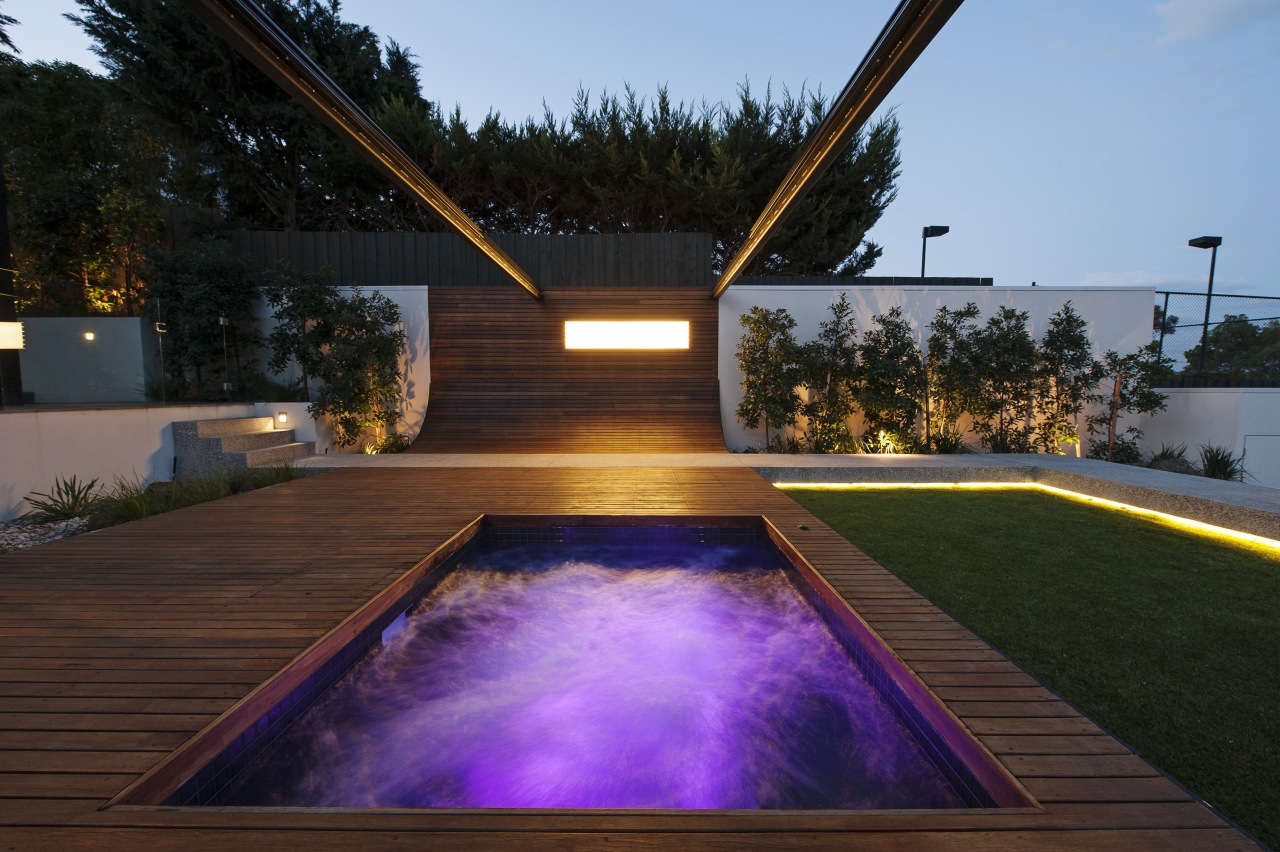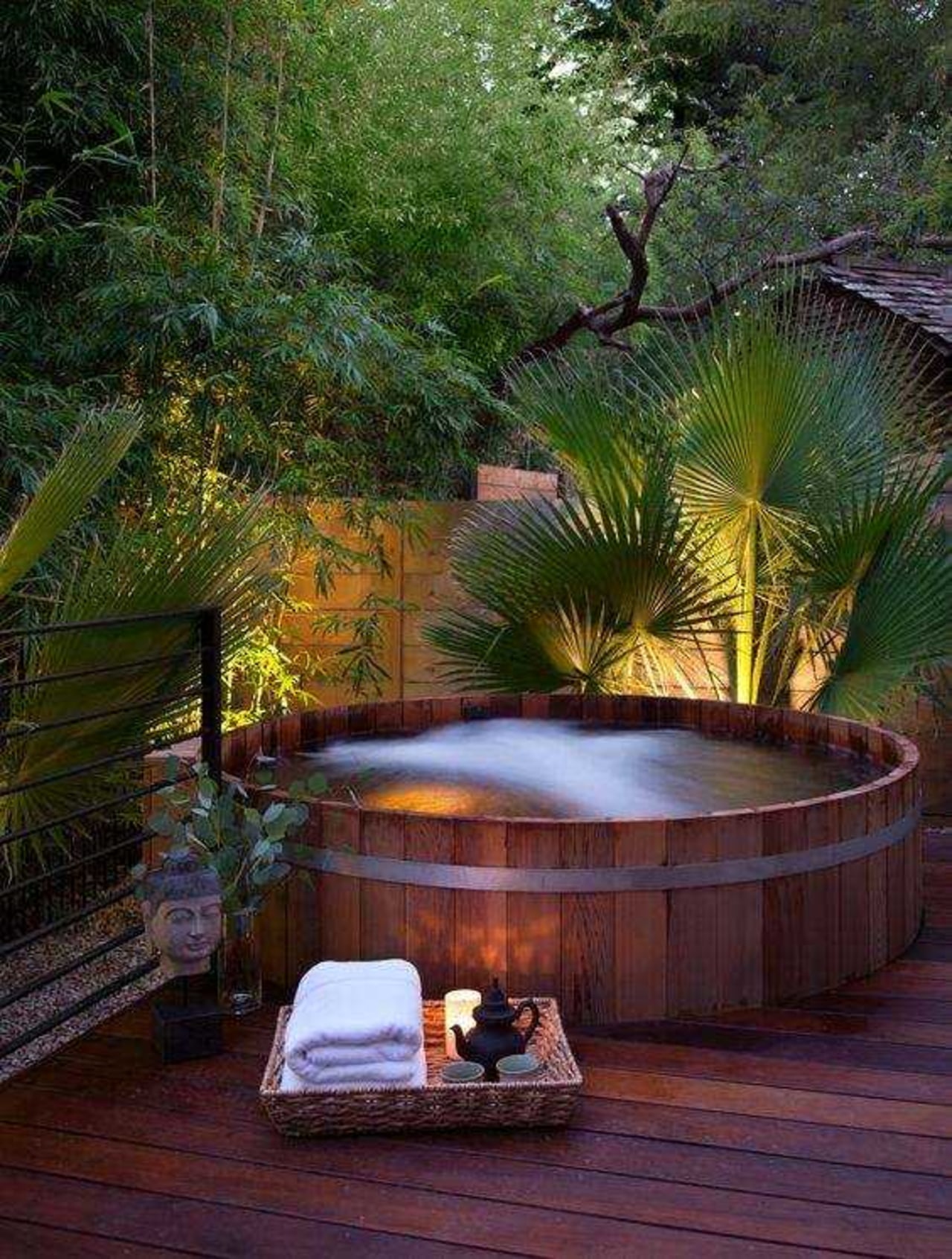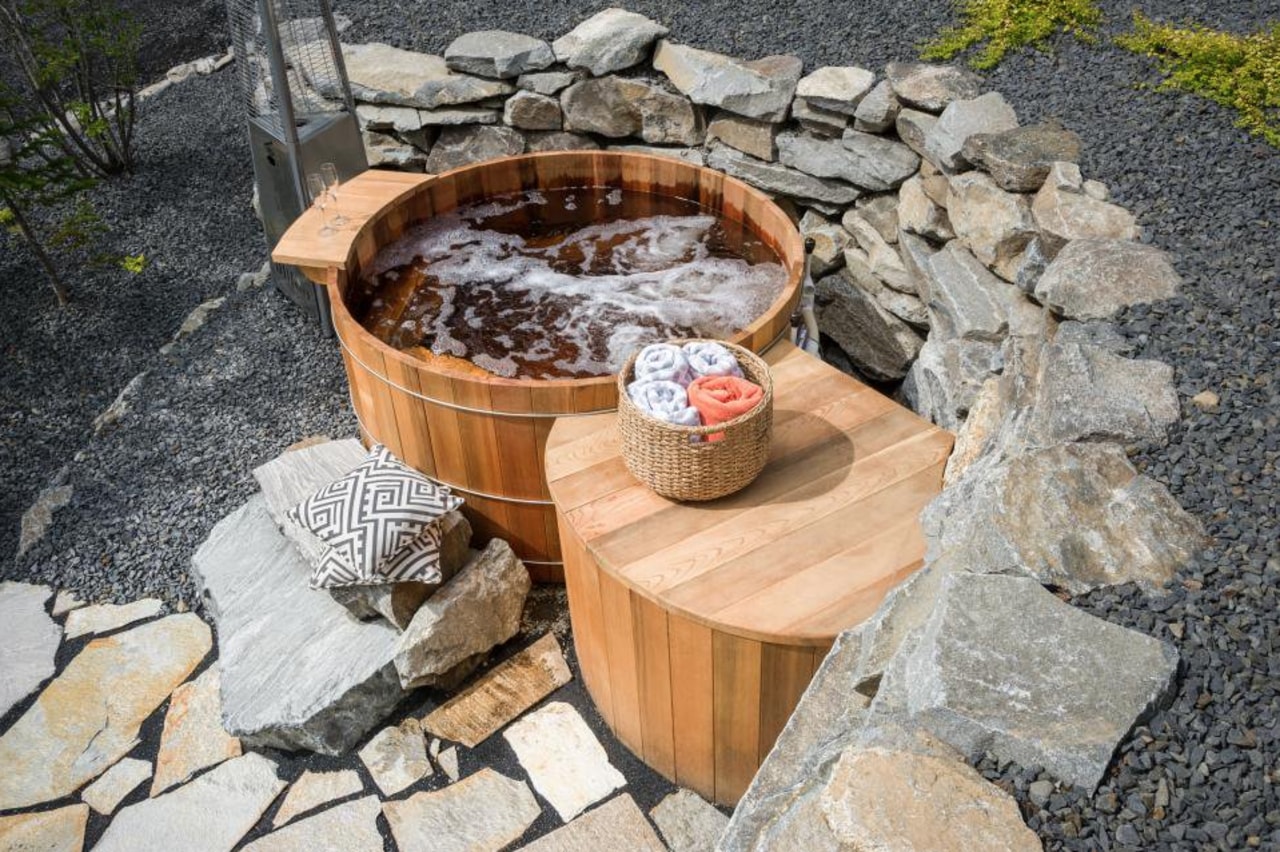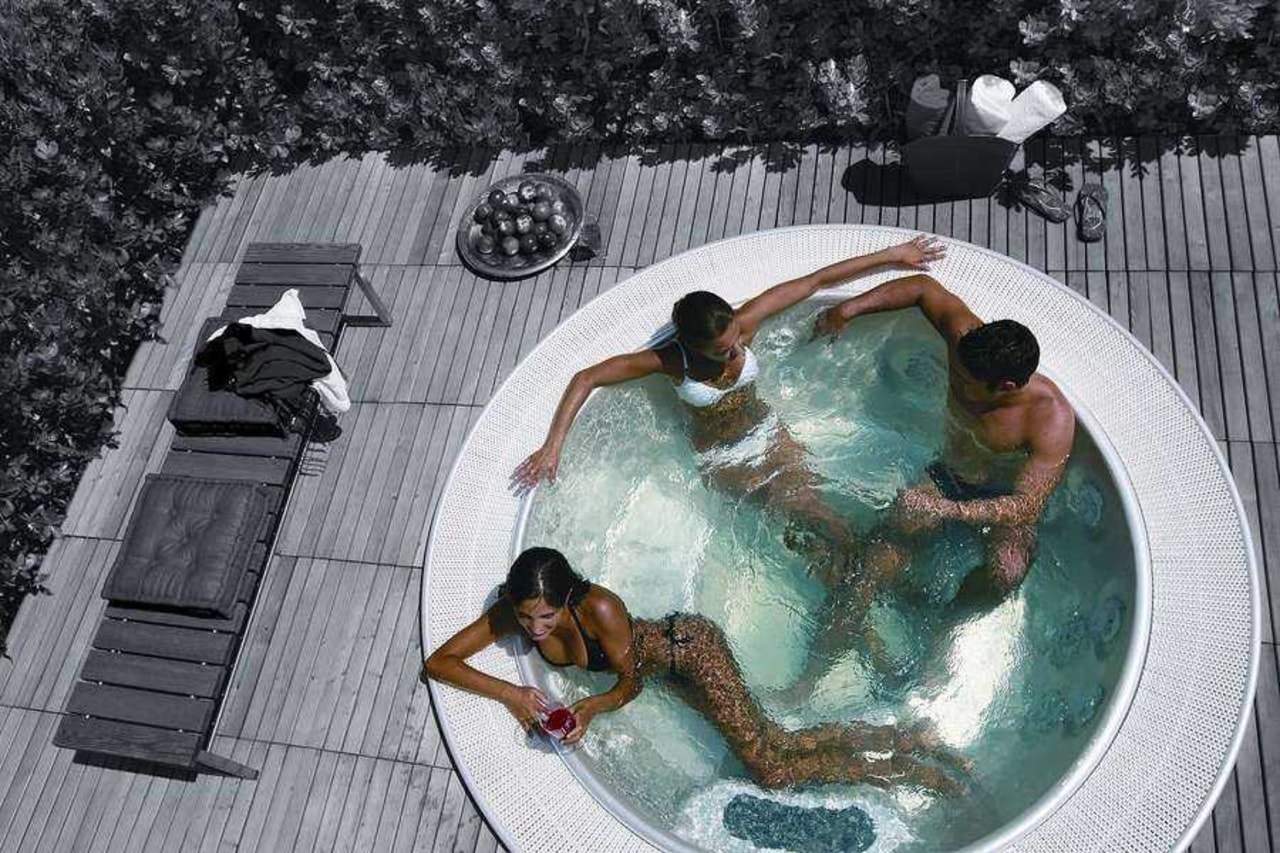The ultimate spa care guide
Much like a regular swimming pool, spas also require a fair amount of maintenance. Here's everything you need to know before committing to getting one for your own home
Spa pools offer the versatility of year-round use. If you're looking to incorporate one into your home, it pays to know about the maintenance they require before you commit to purchasing your own. So, we've asked outdoor living specialists Poynters what it takes to keep your spa pool up to standard.
The requirements for caring for your spa are very much the same as for a large pool. The major points of difference are:
- A spa has a much smaller volume of water
- It is typically heated to a much higher temperature
- The bather loadings are usually much higher than a pool (in relation to water volume)
This means that :
- Water sanitation is even more important
- Maintaining water clarity is a major issue
Balancing
Spa pools require correctly balanced water to maximize bather comfort, maximize sanitizer efficiency, and prolong spa surface and equipment life.
Balancing means monitoring the levels of pH, alkalinity and hardness in your spa water.
Typical ideal levels for the most common acrylic type spas are:
pH: 7.2-7.6; alkalinity: 80-150; hardness: 180-250
It is not possible to lower hardness in a practical manner. This can be done through water dilution - removing spa water and replacing with fresh tap water. Although this may upset the other balance parameters which may need to be adjusted.
Sanitising
Spa pools require regular sanitising to maintain good quality water for bathing. The sanitiser takes on the role of killing bacteria, viruses and algae. The addition of an oxidiser is also essential to burn out organic contaminants that build up over time to cause spa water to go cloudy.
Chlorine is an effective sanitiser and oxidiser and is a common form of sanitiser for spas. However, it is not very stable at high temperatures, causing it to dissipate quickly in a spa environment.
Bromine is perhaps a better sanitiser for spas because it is more stable at high temperatures. Typically, bromine has a small portion of chlorine content as pure bromine is not a good oxidiser whereas chlorine is.
Approximately 5% of bathers have a reaction to bromine. Approximately 17% of bathers have a reaction to chlorine. For this reason, poynters poolside is a specialist in alternative sanitisers.
Ozone is now widely used for spa sanitation. Ozone is much more effective than either chlorine or bromine at sanitising when sufficient ozone is introduced into the water. It is also an oxidiser. Because ozone is simply O3 (oxygen + an extra molecule) it is an environmentally friendly sanitiser. The extra molecule is very unstable and readily attaches to foreign matter to kill and oxidise away. The major limitation with ozone is that because it is so unstable, it doesn't remain in the water for long. This means spa water has no residual of sanitiser. Spas run on ozone should ideally be run 24 hours a day if they are not assisted with a chemical sanitiser. If this is not the case, the spa water must be supplemented with a small amount of either chlorine or bromine.
Poynters poolside also supplies Spa Magic, a natural formula of enzymes and lanolin which can be used as a 100% chlorine free system. It is also compatible with chlorine. Just add one bottle to spa water. It will last for up to three months.
Poynters also has a non-invasive chlorine-free chemical solution called Pool Magic for spas. Just add a dose each month.

Water Replacement
Because of the high bather loads and small volume of water in a spa, the build up of chemicals and organic matter in a spa can build up quickly over time. This build-up is known as TDS (total dissolved solids). It comprises anything dissolved into the spa water - chemical residues, bather contamination etc... High levels of TDS lead to sanitiser ineffectiveness and a gradual clouding of spa water that will not disappear.
Spa water should be replaced every one to two months. With ozonated water, it may be possible to change spa water every three months. The frequency of the water change is influenced by the number of bathers using the spa and whether you are adding chemicals to assist. Use your judgement.
If you are using Dichlor (soluble chlorine), you should change the water in the spa every one or two months to avoid a build up of chlorine stabiliser in the pool water.
Filtration and Circulation
Just like swimming pools, spa pools need to be filtered regularly. The action of filtration in a spa pool serves to circulate water in the spa and to cleanse the water through the filter. Circulation is important for several reasons:
- water movement reduces the potential for algae growth
- water movement disperses and mixes chemicals in the spa
- water movement is necessary to run the heater
- water movement creates the spa hydrotherapy
By having the filter running, debris and contaminants are caught in the filter. Typically the spa will have a cartridge filter that will periodically (recommended fortnightly) need to be cleaned. Some in-ground spas may have a sand filter which will need to be backwashed on a regular basis (recommended at least once a month).

Cleaning
Brush down the walls of the spa at least weekly to dislodge dirt and any algae build-up. Remove any leaves or other debris from the spa at least weekly to reduce the potential for algae and viruses to breed.
Testing
As with swimming pools, testing of spa water on a regular basis is essential. We recommend spa water is always tested prior to use for correct sanitiser level and pH. Test strips are convenient for this purpose. The 3-in-1 test strips will test chlorine (or bromine), pH and Alkalinity levels. Chlorine levels can change quickly. pH will change less dramatically - the rate depending on the type of chlorine used and the amount of alkalinity in the pool. Alkalinity, at the correct level in the pool, will change slowly over time. If you are changing your spa water every month, it is probably sufficient to just check the sanitiser level and pH on an ongoing basis, once the initial start-up water balance has been done (see below).
Typical Start-up for Auckland Water
Here are our typical start up procedures for fresh water from the Auckland water supply. (For people outside of Auckland, these procedures may not apply as your water balance may be different).

Fresh Water
Each time the spa is refilled, carry out the following treatment to achieve correct water balance. The following directions are applicable for a Spa Pools of approx 1000L (a medium size portable spa). Adjust quantities to suit your spa.
- Pre-dissolve 150g Alkalinity Increase in a bucket of water. Add to the spa and run the filter for half an hour to mix adequately.
- Check pH and if it is above 7.6 add 10g (about one dessertspoon) of pH Decrease. Pre-dissolve in a bucket of water. Add to the spa and run filter for one hour and recheck pH. Add a further 10g of pH Decrease if pH is still above 7.6.
- Pre-dissolve 150g Hardness Increase in a bucket of water. Add to the spa and run filter for half an hour.
Daily Treatment
Whenever the spa is used, add five g (one teaspoon) Dichlor double chlorine directly to the spa one or two hours before use and again immediately after use (quantity will depend on chlorine demand). There is no need to pre-dissolve, just sprinkle over the water surface with the pump running.
Precautions
- Do not drain spa completely if it is set in the ground as in-ground water pressure may lift it out of the ground. Empty only to the seat level.
- Do not use soap or detergents.
Bromine usage for spas
Bromine residual must be maintained between 2-5 ppm (parts per million). Add 2 x 20g tabs weekly or whenever residual drops below 2 ppm. Check bromine level regularly.Add tabs directly to automatic feeder or to a dispenser placed near the return line.
Want to take your outdoor space to the next level? Visit Poynters.
Story by: Poynters
Home kitchen bathroom commercial design


